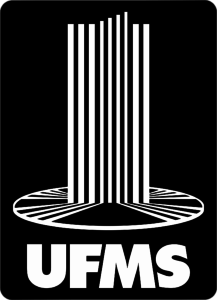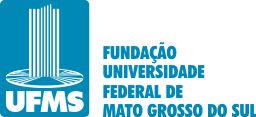Use este identificador para citar ou linkar para este item:
https://repositorio.ufms.br/handle/123456789/11379| Tipo: | Dissertação |
| Título: | Concepções e práticas de educação ambiental na rede municipal de ensino de Jataí (GO) - conhecimentos e sentidos produzidos por meio de uma pesquisa-ação-participante |
| Título(s) alternativo(s): | Conceptions and practices of environmental education in the municipal education network of Jataí (GO) - knowledge and meanings produced through participant-action research |
| Autor(es): | Oliveira, Thaisa Lemos de Freitas |
| Primeiro orientador: | Vargas, Icléia Albuquerque de |
| Resumo: | No município de Jataí (GO), a Secretaria Municipal da Educação (SME) instituiu uma equipe para desenvolver ações de Educação Ambiental (EA) nas escolas públicas municipais. Surgiu, então, o projeto do Grupo Verde (GV) que é constituído por membros ligados à SME de Jataí e por membros ligados às escolas municipais, compondo os chamados GVs mirins. O objetivo do GV é discutir, elaborar e desenvolver ações de EA nas escolas municipais e no município como um todo. Da participação junto ao grupo, como membro do mesmo, e observando o desenvolvimento de suas ações e encontros, bem como as dificuldades encontradas na concretização das ações, surgiu esta proposta de pesquisa-ação, fundamentada na concepção crítica de EA, dialogando com a pedagogia de Paulo Freire e a teoria de representações sociais e percepção ambiental. A pesquisa dividiu-se em três fases: diagnóstico do GV, elaboração de uma ação de intervenção e desenvolvimento da ação de intervenção. Na etapa de diagnóstico, realizou-se o resgate da história do GV e as ações desenvolvidas, de sua criação em 2003 até o presente, onde se identificaram as principais concepções que embasavam as ações realizadas. Analisaram-se os projetos e ações do GV que estavam nos arquivos da SME, buscando identificar as concepções de meio ambiente, de EA e da relação ser humano-natureza neles presente. A análise evidenciou a predominância de concepções naturalistas e comportamentalistas de EA e da relação ser humano-natureza. Baseando-se em tais evidências, elaborou-se uma proposta de intervenção junto ao grupo, constituída de um curso de formação continuada em EA, utilizando estratégias de dinâmicas de cooperação, uso de imagens e trilhas em espaços naturais. Tais estratégias tinham por objetivo revelar as representações de EA e da relação ser humano-natureza, além da percepção ambiental dos participantes e fazê-los refletir sobre elas, buscando novas ressignificações. Os textos, imagens, desenhos e projetos de EA produzidos durante o curso, além dos questionários respondidos antes e ao final do mesmo, foram utilizados na análise das concepções e percepções a fim de avaliar as mudanças ocorridas. Os resultados demonstraram que ainda continuou como predominante a concepção naturalista e romântica da relação ser humano e natureza e, por conseguinte de EA, mas com uma relevante diminuição ao passo que a concepção sócio-histórica aumentou. Nos projetos de EA analisados predominaram concepções sócio-históricas de EA. Quanto à percepção ambiental, notou-se a predominância de sentimentos topofílicos com relação ao ambiente escolar, mas valorizando-se predominantemente os aspectos físicos do ambiente do que aspectos relacionados às relações humanas nesse local. A intervenção possibilitou o exercício do processo participativo e permitiu que novos olhares fossem direcionados ao ambiente escolar, possibilitando novas interpretações e sentidos da prática de EA. No entanto, reitera-se que o GV, enquanto proposta da SME de Jataí (GO) precisa ser encarada como política pública e, dessa forma, ser mais bem estruturado a fim de maximizar e melhor qualificar suas ações. |
| Abstract: | In the city of Jataí (GO), the Municipal Secretary of Education (MSE) established a team to develop actions for Environmental Education (EE) in public schools. Arose, then, the project of the Green Group (GG) which is composed of members connected to the MSE of Jataí(GO) and members connected to public schools, making the so-called junior Green Group. The goal of GG is to discuss and to develop actions of EE in the municipal schools and the municipality as a whole. Participation with the group as a member of it, and observing the development of their actions and meetings as well as the difficulties encountered in implementing the actions, we have this proposal for action research, based on design critical EE, dialoguing with the pedagogy of Paulo Freire and the theory of Social Representations and Environmental Perception. The research was divided into three stages: diagnosis of GG, preparation of an action of intervention and development of action for intervention. In the stage of diagnosis, there was redemption in the history of GG and the actions developed from its inception in 2003 until the present, which identified the key concepts that underpinned the actions taken. We analyzed the projects and actions of the GG that were in the archives of MSE in order to identify the conceptions of the environment, EE and the relationship between human beings and nature within them. The analysis showed the prevalence of behavioral and naturalistic conceptions of EE and the relationship between human beings and nature. Based on this evidence, elaborated a proposal for action by the group, consisting of a continuing education course in EE using dynamic strategies of cooperation, use of images and tracks in natural areas. These strategies were designed to reveal the representations of EE and the relationship between human beings and nature, and the environmental perception of the participants and make them reflect on them, seeking new resignifications. The text, images, drawings and designs of EE produced during the course, in addition to questionnaires before and at the end of it, were used in the analysis of concepts and perceptions in order to assess the changes. The results showed that still continued to be predominant naturalistic and romantic relationship between human beings and nature and therefore the EA, but with an important decrease while the socio-historical conception increased. In the draft EE analyzed predominant socio-historical conceptions of EE. The environmental perception, we found the prevalence of topofilic feelings regarding the school environment, but valuing predominantly physical aspects of the environment than aspects related to human relations in this location. The intervention enabled the exercise of the participatory process and allowed new looks were directed to the school environment, enabling new interpretations and meanings of the practice of EE. However, it is reiterated that the GG, while the MSE proposal of Jataí (GO) must be regarded as public policy and thus be better structured to maximize and better qualify their actions. |
| Palavras-chave: | Pesquisa-Ação Grupo Verde Representações Sociais Percepção Ambiental Educação Ambiental Crítica |
| CNPq: | Ensino-Aprendizagem |
| Idioma: | por |
| País: | Brasil |
| Editor: | Universidade Federal de Mato Grosso do Sul |
| Sigla da Instituição: | UFMS |
| Faculdade, Instituto ou Escola: | INFI |
| metadata.dc.publisher.program: | Programa de Pós-Graduação em Ensino de Ciências |
| Tipo de acesso: | Acesso Aberto Attribution-NonCommercial-NoDerivs 3.0 Brazil |
| metadata.dc.rights.uri: | http://creativecommons.org/licenses/by-nc-nd/3.0/br/ |
| URI: | https://repositorio.ufms.br/handle/123456789/11379 |
| Data do documento: | 2010 |
| Aparece nas coleções: | INFI - Programa de Pós-graduação em Ensino de Ciências Programa de Pós-graduação em Ensino de Ciências |
Arquivos associados a este item:
| Arquivo | Descrição | Tamanho | Formato | |
|---|---|---|---|---|
| THAISA LEMOS DE FREITAS OLIVEIRA.pdf | 17,25 MB | Adobe PDF | Visualizar/Abrir |
Este item está licenciada sob uma Licença Creative Commons


